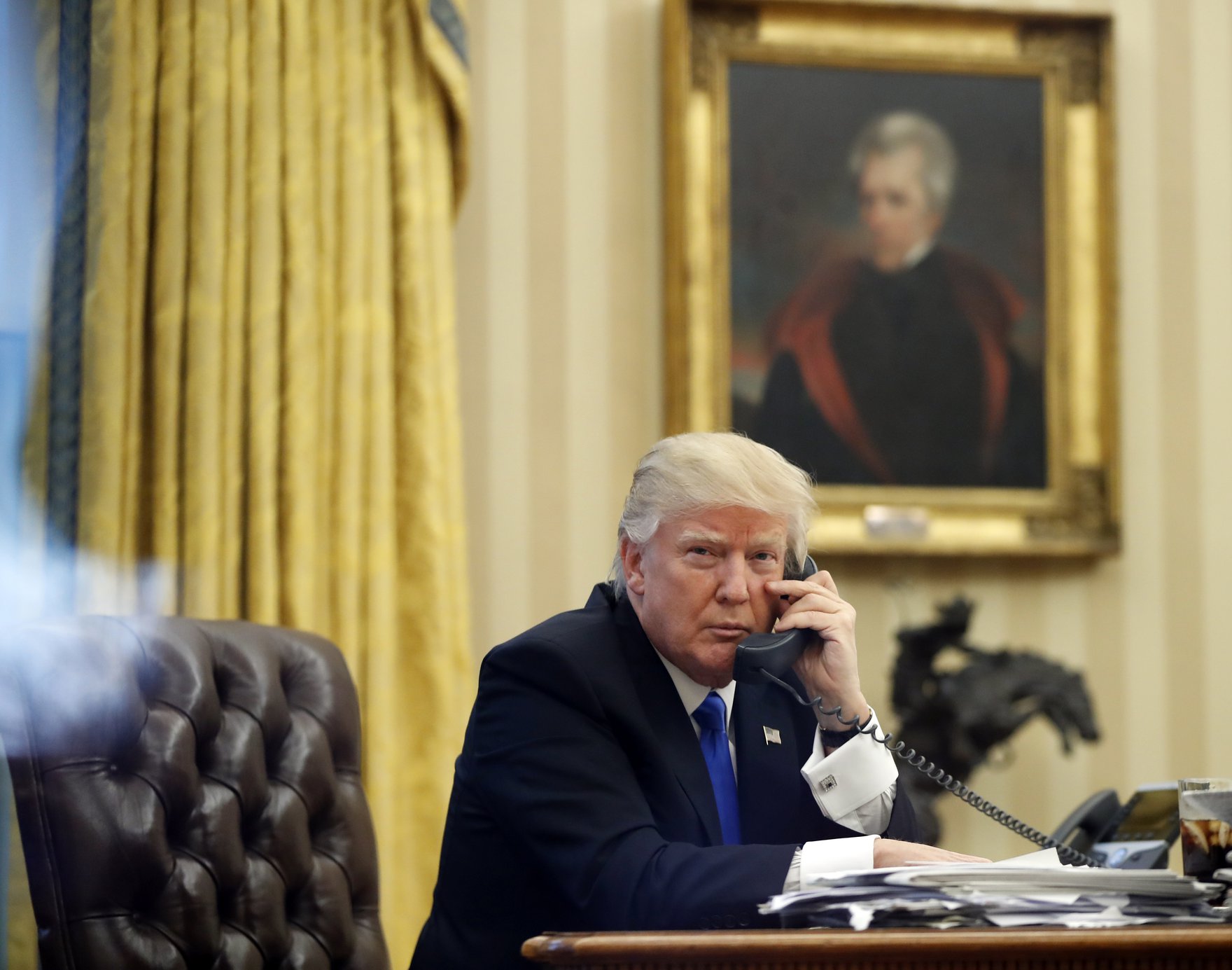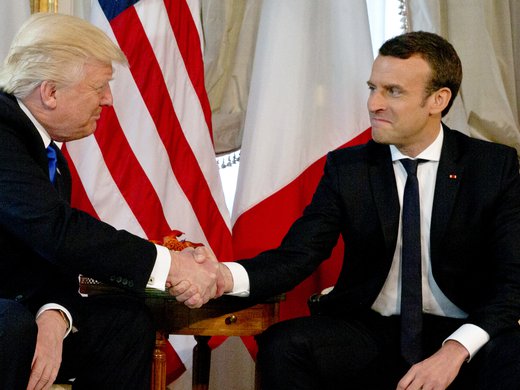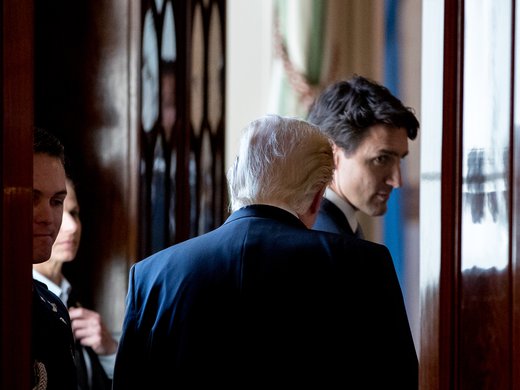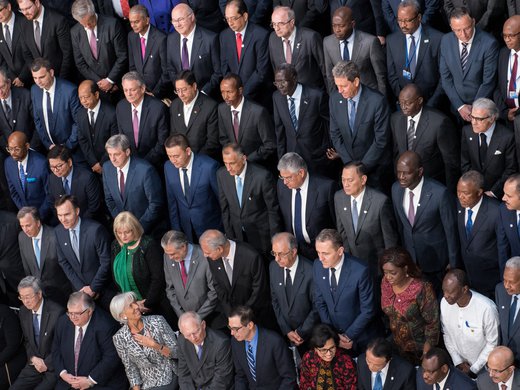Donald Trump seemingly enjoys comparing his presidency to that of Andrew Jackson, whose own unconventional governing style and controversial cabinet choices offended the sensibilities of antebellum Washington elites. While there are some superficial similarities between the two men, including a feud with the judiciary, and Trump may fancy comparisons to “Old Hickory,” Jackson’s biographer Jon Meacham dismisses the comparison. Surprisingly, a more telling comparison — albeit unfavourable — may be with Franklin D. Roosevelt.
Like Trump, FDR was a disrupter. Not only did he eschew conventional wisdom, he revelled in his heterodoxy. It was Roosevelt, after all, who defied the monetary orthodoxy of his day by severing the link between the dollar and the gold standard; in effect, defaulting on gold-linked Treasury bonds in the process. As Berkeley economics professor Barry Eichengreen (2014) has written, Roosevelt’s dismissal of the gold standard as exemplifying “the old fetishes of international bankers” antagonized bankers and foreign leaders alike. His apostasy marked him as fundamentally unsound to New York bankers. But this criticism only reinforced his belief that it was the correct thing to do.
He was right. By freeing monetary policy from the “fetters” of the gold standard, Roosevelt’s action allowed for expansionary monetary policy that would halt ongoing deflation, which in 1933 was propagating the economic stagnation of the Great Depression.
Roosevelt was also capable of erratic policy pronouncements that isolated and contradicted his own cabinet members. Sound familiar?
Early in his first term he sent his Secretary of State, Cordell Hull, to the World Monetary and Economic Conference in London, which had been called to search for a way out of global economic depression. Hull was dispatched ostensibly to negotiate measures to stabilize exchange rates between major currencies as a prelude to a return to the gold standard. Once there, however, and having laboured under difficult circumstances to secure an agreement, Hull found his negotiating position undermined by the president’s decision to reject the conference declaration.
In the end, the London conference, which had opened with optimism and goodwill, foundered on recriminations and suspicion. It would take six more years of international stagnation, followed by four years of global war, before countries convened to discuss international monetary arrangements at Bretton Woods, New Hampshire.
What made Hull’s assignment so frustrating was the fact that his most difficult negotiations involved the members of his own delegation. FDR had packed the US negotiating team with committed free traders, like Hull, as well as staunch protectionists; “sound money” men, who supported an early return to gold; and monetary reformers. It was little wonder that Hull had difficulty keeping his delegation together, not to mention getting them to agree on a common position.
That, too, may sound vaguely familiar. In the wake of his first presidential trip abroad, President Trump has demonstrated he is willing to rile long-time allies and put into question international agreements. And he returned home to personnel “issues” with his staff.
Reports of infighting and discord among different advisers within the White House filled the first 100 days of the Trump administration. That would be nothing unusual to close observers of the Roosevelt administration. FDR was notorious for withholding information, keeping his own Cabinet guessing about his policy preferences and creating competing centres of power.
The most significant clash of competing power centres was between Treasury and State. The warring between the two powerful departments reached a climax in the discussions over postwar international trade and financial policies months before the Bretton Woods conference. At one point in the negotiations between US and UK officials, State officials openly sided with John Maynard Keynes, who led the UK delegation, earning them and their department the lasting enmity of their Treasury counterparts. In the end, the US Treasury prevailed and for the next 70 years reigned over US financial diplomacy.
Trump and Roosevelt may also share certain personal qualities. FDR chronicler Robert Dallek (1995) has observed that the chief ingredient in President Roosevelt’s success was the aura of confidence in himself that he exuded. One can say this for Trump: he does not outwardly lack for self-confidence. Reports also suggest that the current resident of the White House is intensely loyal to long-serving staff. So, too, Roosevelt.
No member of FDR’s inner circle was viewed with more suspicion by the “beltway insiders” of the day than Harry Hopkins. A former social worker, Hopkins was committed to FDR’s New Deal, which sought to help the millions of Americans then suffering through the Great Depression. His access to the Oval Office led some in FDR’s Cabinet and official Washington to resent Hopkins. The president was devoted to him, however, and Hopkins enjoyed FDR’s complete confidence, eventually serving as FDR’s envoy to Winston Churchill and Joseph Stalin on critical wartime missions.
Roosevelt explained his loyalty to Hopkins in a candid confession to his Republican presidential rival, Wendell Willkie: “Someday you may be sitting here where I am now as President of the United States,” FDR said. “And when you are, you’ll be looking at that door over there and knowing that practically everybody who walks through it wants something out of you. You’ll learn what a lonely job this is, and you’ll discover the need for somebody like Harry Hopkins who asks for nothing except to serve you” (ibid.). It is possible to imagine Donald Trump saying something similar about Michael Flynn, former US national security adviser.
But that is where the similarities end.
While FDR created a team of rivals and fermented bureaucratic infighting (particularly within the State Department, which he considered too Eurocentric), his motives were strategic. In part, he wanted to retain control of policy and the capacity to conduct “personal diplomacy.” But Roosevelt also wanted to encourage a competition of ideas that would lead to possible ways out of the Great Depression — ideas that he would evaluate based on his own extensive experience and drawing on his intellectual curiosity. In some respects, FDR was uniquely capable of assessing competing ideas, having served as undersecretary of the navy during World War I, benefiting from an extensive knowledge of international affairs and having been elected governor of New York. In short, Roosevelt was exceptionally well qualified to be president at that particular point in history. Trump: not so much.
Moreover, Roosevelt welcomed debate and encouraged others to speak truth to power. Dallek also records that, in June 1942, as the Allies were laying plans for the liberation of Europe, even while reeling from a series of Axis defeats, Roosevelt contemplated putting a large force into the Middle East. Chief of Staff General George Marshall complained that that “was such an overthrow of everything that they had been planning for, he refused to discuss it at that time of night in any way” (ibid.) and walked out of the room. Marshall’s actions only endeared him to the president.
It is not clear, based on press reports of the inner workings of the White House, whether the current president is as ready to accept frank advice and criticism from his senior advisers.
The most important differences between the two disrupters in chief lie in their policies. FDR was rightly criticized for erratic and unorthodox policy making. Yet, his policy experiments all sought to alleviate the plight of the unemployed. It is important to recall the extent of the economic trauma of his day: At the time of Roosevelt’s inauguration, the rate of unemployment stood at 25 percent, more than double the highest rate recorded following the 2008 financial crisis, and five times the unemployment rate in January 2017. One might sum up his philosophy as “if orthodoxy isn’t working, try something that might; if that doesn’t work, try something else.” The most important thing was to help the poor and dispossessed.
Trump’s policies, contrary to his campaign promises, seem purposefully designed to further enrich the wealthy at the expense of the poor. Moreover, to this point at least, Donald Trump has largely focused on communicating with his political base in coarse appeals to atavistic nativism. More worryingly, in attacking the free press he consciously or unwittingly undermines the institutions of democracy at home, while he undercuts democracy abroad by subjecting German Chancellor Angela Merkel to the same bullying he practised on his Republican primary rivals and Hillary Clinton. At the same time, Trump has embraced thugs and anti-democratic rulers, contrary to the ideals of American democracy and the moral authority of the office of president.
In contrast, FDR’s messages supported the fundamental principles on which the United States was created. Roosevelt countered fascist advances in foreign lands by encouraging democracies around the globe not to lose faith in the system of majority rule. His State of the Union address in January 1936 attributed the growing threat of war to rulers in Europe and Asia who had “impatiently reverted to the old belief in the law of the sword, or to the fantastic conception that they, and they alone, are chosen to fulfill a mission and that all others…must and shall learn from and be subject to them.” And, when the United Kingdom and the British Commonwealth stood against Nazi aggression, FDR committed the United States to becoming the “arsenal of democracy” that would provide the weapons with which others would defend the rule of law and the principle of majority rule.
Roosevelt understood the need to communicate with Americans — all Americans. FDR explained his policies in a series of radio fireside chats. “He talked like a father discussing public affairs with his family in the living room,” the historian William E. Leuchtenburg (1963) wrote. “As he spoke, he seemed unconscious of the fact that he was addressing millions.” Perhaps Roosevelt connected so easily with Americans because he appealed to their sense of fairness and shared values.
In this respect, Leuchtenburg summed up FDR’s legacy in terms of access to opportunity. “When Roosevelt took office,” the historian observed, “the country, to a very large degree, responded to the will of a single element: the white, Anglo-Saxon, Protestant property-holding class. Under the New Deal, new groups took their place in the sun.” To achieve that goal he had to disrupt the status quo of economic policy orthodoxy and shake off the lethargy of conventional thinking that maintained that there was nothing that could be done to counter economic stagnation. He was a disrupter in chief.
Donald Trump is also a disrupter in chief. But his first 100 days seem to have been preoccupied with a return to the pre–New Deal era, oblivious to the demographic and social changes that have occurred in America. What will his legacy be?



